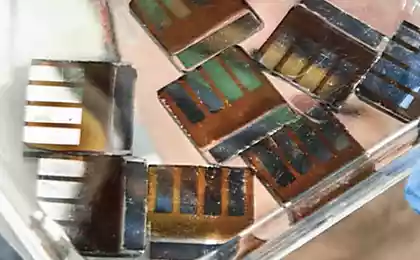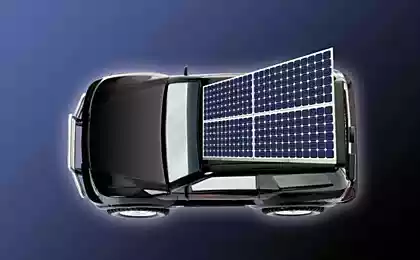1195
The film of the perovskite can increase the efficiency of solar panels by 50%

Scientists from Stanford established , that the application of a thin translucent film of crystalline mineral perovskite can seriously increase the efficiency of solar energy output, while not increasing much they cost.
Study co-author, Michael McGee, said: "It has long, work is underway to obtain more efficient and less expensive solar panels. Now the market is dominated by silicon solar panels but their effectiveness is stuck at around 25% and did not change the past 15 years [ refers to the industrial designs that are available to customers - prim.perev. I>] Creating affordable tandems on the basis of such panels - the desired goal. You just place one on top of another solar cell, as a result of the efficiency obtained is greater than each of them individually. From a commercial point of view as a substrate is logical to use silicon solar cells. A candidate for the upper part was not until a perovskite material »

Colin Bailey, one of the study's authors, said: "Our goal - to convey the idea to the existing silicon production worldwide. To use the tandem solar cells do not require billions in investments in new technologies. Enough to make silicon module and put on top of the perovskite layer that does not require special expenses »
Innovation, which succeeded scientist is in production technology translucent perovskite. This layer absorbs high energy photons from only the visible spectrum, letting the others, while the silicon substrate works primarily low energy photons, and by the infrared spectrum.
Causing this way perovskite with a conversion efficiency of 12.7% on a layer of low-cost silicon panels with an efficiency of 11.4%, they got the panel efficiency of 17%. The plans of scientists - to achieve the receipt of the tandem with the efficiency of 25%, equal to the current top-end panels, but with a much lower cost of production. And in the future, in 10 years, to achieve efficiency of the panels 30%.

Perovskite - a rare mineral found in the Ural Mountains German geologist Gustav Rose and named it in honor of the Russian statesman Count LA perovskite, who was a collector of minerals. Crystalline mineral is simple and inexpensive to manufacture in a laboratory. In 2009, the first samples were obtained perovskites that possessed the photoelectric effect, and at the moment of the crystals obtained photovoltaic cells with an efficiency of 20%.
Source: geektimes.ru/post/244744/























